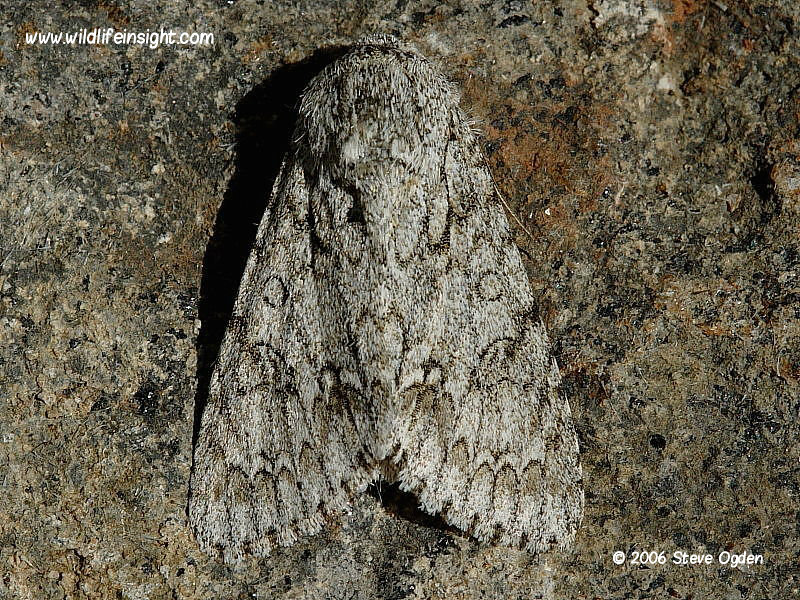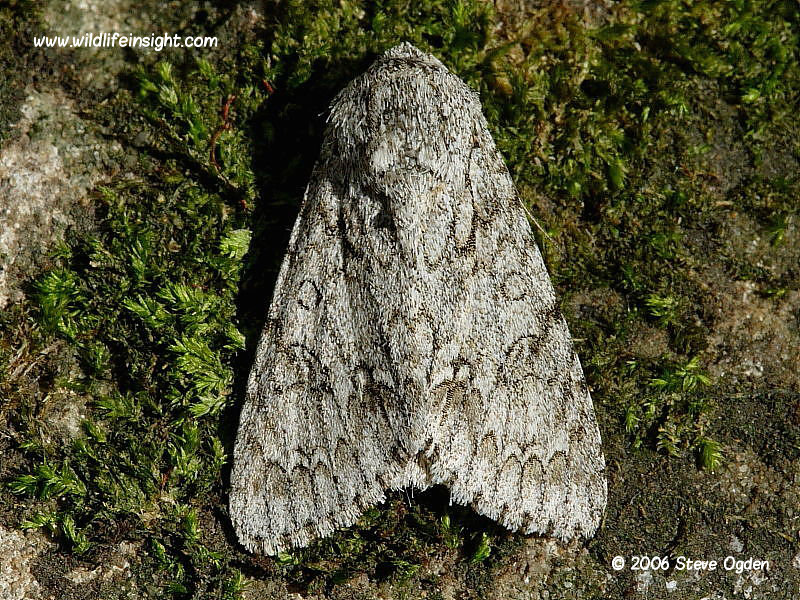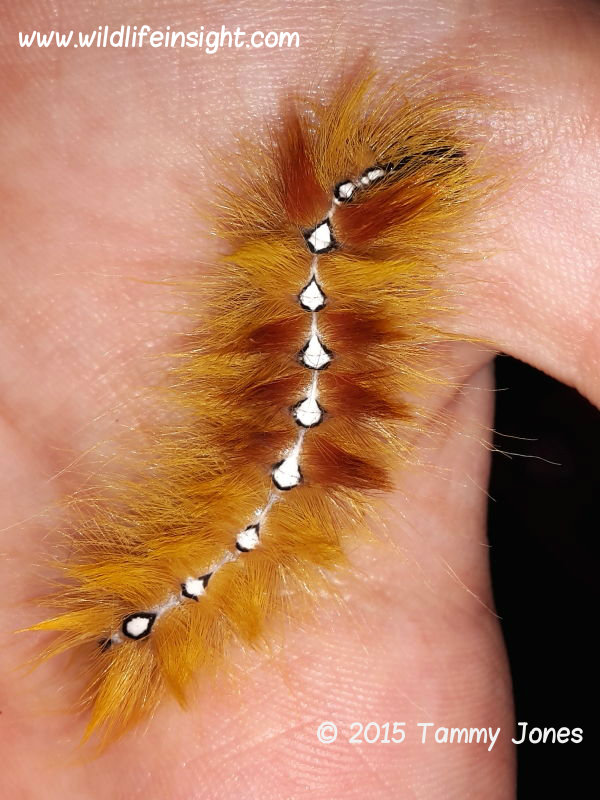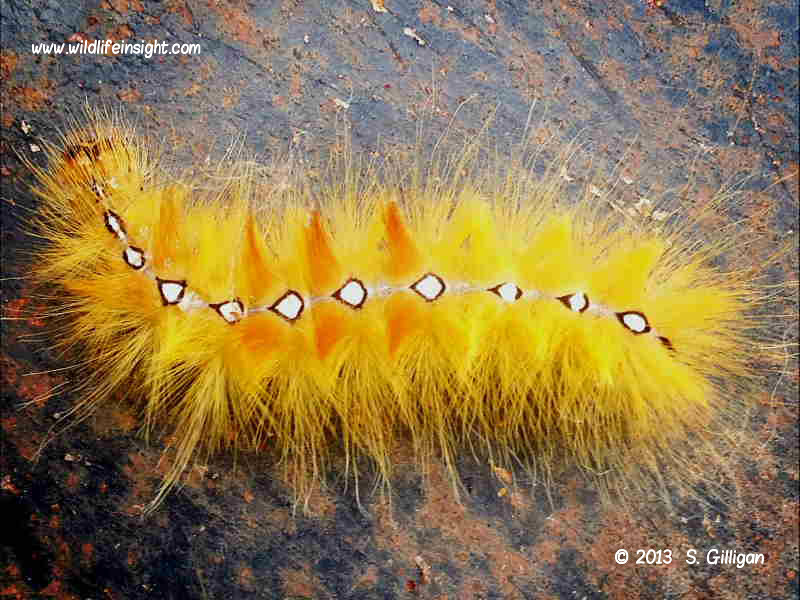The Sycamore caterpillar and moth Actronicta aceris
The Sycamore moth
The Sycamore moth is well recorded in much of the southern half of England but scarcer in the south west and absent from northern England, Scotland and large parts of Cornwall.
Wingspan is approximately 45mm with darker forms occurring.
The adult moth flies in a single generation between June and August when it’s attracted to light in small numbers.
The females lay reddish eggs on the leaves of poplar, aspen and willow – the foodplants of the caterpillars.
The adult moths shown above were attracted to light in Leigh Woods, Bristol. The photo left was taken by Tammy Jones of a Sycamore caterpillar found by her children in their garden in West Yorkshire.
My thanks go to Tammy and also to Scarlet Gillan, Mark Roberts and Kelvyn Bailey for their photos of Sycamore caterpillars shown below.
Many species of the Acronictinae sub family are referred to as Dagger Moths due to the black, dagger like streaks on the forewings of several species.
Other common Dagger species include common species such as Dark Dagger, Grey Dagger, The Miller, Poplar Grey, Alder Moth and The Knot Grass.
Other hairy caterpillars can be seen in the moth caterpillar Gallery
Sycamore moth caterpillar
The caterpillars grow to about 40mm and are one of the most colourful and hairy species to be found in the British Isles.
The caterpillar foodplants are poplar, aspen and willow.
They are most frequently seen when fully grown in late summer wandering over the ground in search of somewhere to pupate.
Just prior to pupating they have a habit of dropping out of trees, sometimes onto people walking below.
The caterpillars overwinter, sometimes twice, in a cocoon spun amongst wood/bark or leaf litter.



